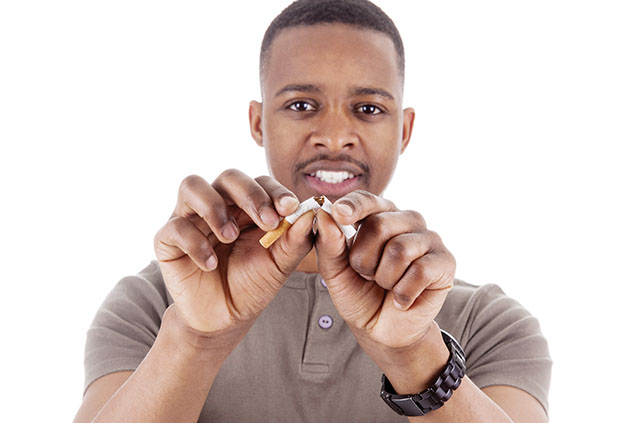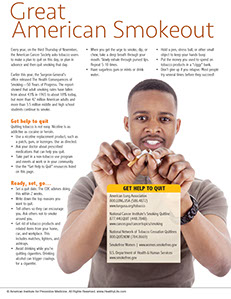SYMPTOM CHECKER
CONDITIONS
Male
Female
Child
Arm, Hand & Shoulder Concerns
Legs & Feet Concerns
Dental & Mouth Concerns
Ear & Nose
Eye Conditions
Head Conditions
Arm, Hand & Shoulder Concerns
Legs & Feet Concerns
Front
Back
Arm, Hand & Shoulder Concerns
Dental & Mouth Concerns
Ear & Nose
Eye Conditions
Head Conditions
Arm, Hand & Shoulder Concerns
Dental & Mouth Concerns
Ear & Nose
Eye Conditions
Head Conditions
Front
Back
Arm, Hand & Shoulder Concerns
Neck Links
Head & Neck Concerns
Arm, Hand & Shoulder Concerns
Neck Links
Head & Neck Concerns
Front
Back
Online Clinic
Wise Healthcare
Great American Smokeout

Print on Demand
Every year, on the third Thursday of November, the American Cancer Society asks tobacco users to make a plan to quit on this day, or plan in advance and then quit smoking that day.
Earlier this year, the Surgeon General’s office released The Health Consequences of Smoking—50 Years of Progress. The report showed that adult smoking rates have fallen from about 43% in 1965 to about 18% today, but more than 42 million American adults and more than 3.5 million middle and high school students continue to smoke.
Get help to quit
Quitting tobacco is not easy. Nicotine is as addictive as cocaine or heroin.
• Use a nicotine replacement product, such as a patch, gum, or lozenges. Use as directed.
• Ask your doctor about prescribed medications that can help you quit.
• Take part in a non-tobacco use program and events at work or in your community.
• Use the “Get Help to Quit” resources listed on this page.
Ready, set, go…
• Set a quit date. The CDC advises doing this within 2 weeks.
• Write down the top reasons you want to quit.
• Tell others so they can encourage you. Ask others not to smoke around you.
• Get rid of tobacco products and related items from your home, car, and workplace. This includes matches, lighters, and ashtrays.
• Avoid drinking while you’re quitting cigarettes. Drinking alcohol can trigger cravings for a cigarette.
• When you get the urge to smoke, dip, or chew, take a deep breath through your mouth. Slowly exhale through pursed lips. Repeat 5-10 times.
• Have sugarless gum or mints or drink water.
• Hold a pen, stress ball, or other small object to keep your hands busy.
• Put the money you used to spend on tobacco products in a “ciggy” bank.
• Don’t give up if you relapse. Most people try several times before they succeed!
Get help to quit
American Lung Association
800.LUNG.USA (586.4872)
National Cancer Institute’s Smoking Quitline
877.44U.QUIT (448.7848)
www.cancer.gov/cancertopics/smoking
National Network of Tobacco Cessation Quitlines
800.QUIT.NOW (784.8669)
Smokefree Women
U.S. Department of Health & Human Services
This website is not meant to substitute for expert medical advice or treatment. Follow your doctor’s or health care provider’s advice if it differs from what is given in this guide.
The American Institute for Preventive Medicine (AIPM) is not responsible for the availability or content of external sites, nor does AIPM endorse them. Also, it is the responsibility of the user to examine the copyright and licensing restrictions of external pages and to secure all necessary permission.
The content on this website is proprietary. You may not modify, copy, reproduce, republish, upload, post, transmit, or distribute, in any manner, the material on the website without the written permission of AIPM.
2021 © American Institute for Preventive Medicine - All Rights Reserved. Disclaimer | www.HealthyLife.com















































